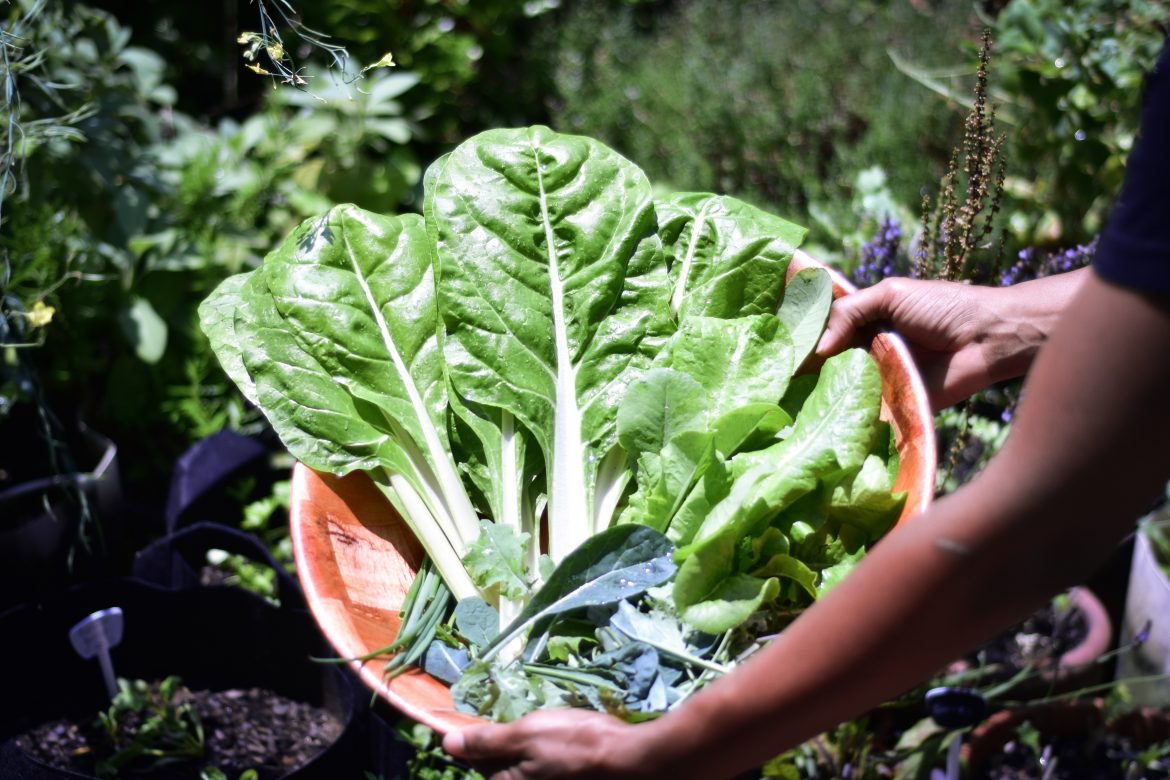No space for a dedicated kitchen garden? Struggling with poor soil? Try one of these clever strategies to grow your own veggies in any space.
VERTICAL GARDENS
By making use of the walls to ‘grow up’ you can still create a kitchen garden, albeit a vertical one. As the vegetables and herbs are grown in containers, which can be filled with the ideal type of soil, this space-saving solution is great for those who battle with poor drainage or infertile soil in their garden beds.
Raising the pots off the floor means there’s less bending involved making this a good choice for gardeners with back problems; just take care not to hang the containers too high or make them too heavy to lift from the wall when renewing the soil. Another plus is that snails are less likely to find their way up the walls and munch your plants.
Here’s how
Place a variety of containers on shelves secured to the wall with strong brackets. Attach a sturdy trellis to a wall and hook containers in differing sizes and shapes onto it at varying intervals. Prop an old ladder against a wall and fix containers onto each rung.
Train climbing vegetables like peas, beans, tomatoes, squash and sweet potatoes up wooden or metal trellises, pillars, tripods or an arch.
Tips
- In tight spaces where little sun reaches containers on the ground, hang them on the wall where they can make the most of the available sunlight. East-facing walls are best; north- and west-facing walls, which absorb and retain heat in winter, can be too hot in summer; avoid cold, south-facing walls.
- Although fibreglass or plastic pots are a lighter option, heavier cement containers retain moisture while insulating the plant’s roots from the heat of the sun.
- Distribute the weight evenly by using several small containers. Fill your pots with a high-quality potting mix with a high proportion of soil. It needs replacing less frequently and doesn’t sink down, holding water and nutrients better than compost and bark-based mixes although these are lighter. As the soil in containers tends to dry out quickly and doesn’t hold nutrients as well as that in garden beds, you’ll need to water and feed your potted plants more frequently. Mix the soil with some perlite, vermiculite or water-retaining granules to help retain moisture.
- Shallow-rooted vegetables and herbs, like radicchio, baby marrows and fancy lettuce, and ‘baby’ vegetables, like mini cabbages, are best suited to containers. Grow deep-rooting vegetables like carrots in tall, narrow containers. Include vegetables that can either climb or cascade like sweet potatoes, baby gem squash and cherry tomatoes.
GROW VEGGIES IN FLOWER BEDS
When space is tight, why not take your cue from traditional cottage gardens and grow veggies and herbs in amongst your flower beds? Great for time-pressed gardeners, the advantages are that the soil is already well prepared and your workload won’t be increased as all the plants can be fed and watered simultaneously.
As the diversity of plants is expanded, pests may be disorientated by the variety of smells and colours, and as a result, are less likely to target your vegetables. The downside is that once your crops have been harvested, you may be left with a few gaps in your bed.
Designing your edible flower bed
Plant a few vegetables in amongst your flowers, use them as a border, to create an attractive pattern or place them in regimented rows.
Experiment with different colours, textures and shapes. Use architectural plants like rhubarb and globe artichokes to make a statement. Add groups of carrots or edge your beds with parsley to provide new textures. Introduce vibrant colours with rainbow Swiss chard, beetroot and purple basil.
Tip
- Most vegetables like sun and their own space so take care not to let them get swamped by other plants.
ALSO SEE:
Featured image: Unsplash
Originally published in Garden&Home Magazine.

